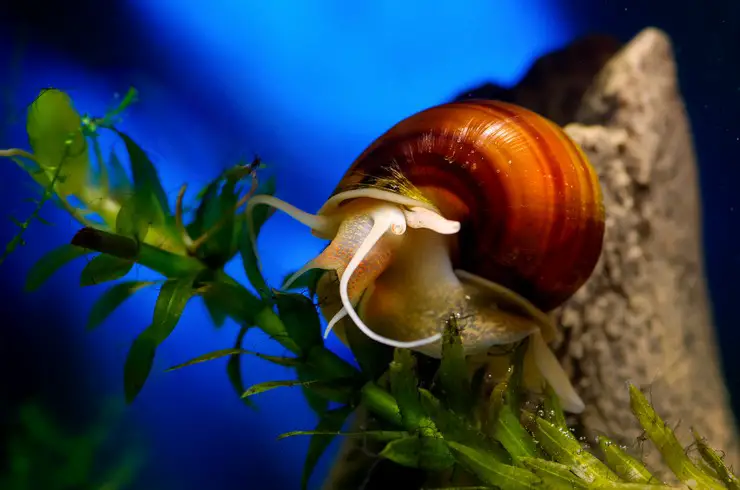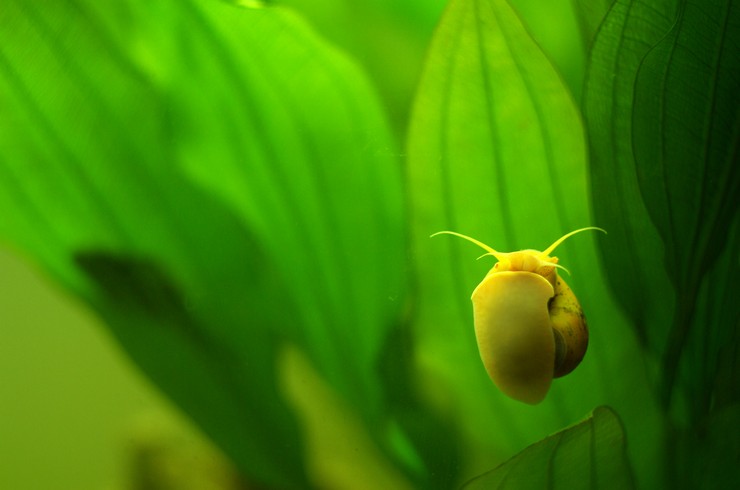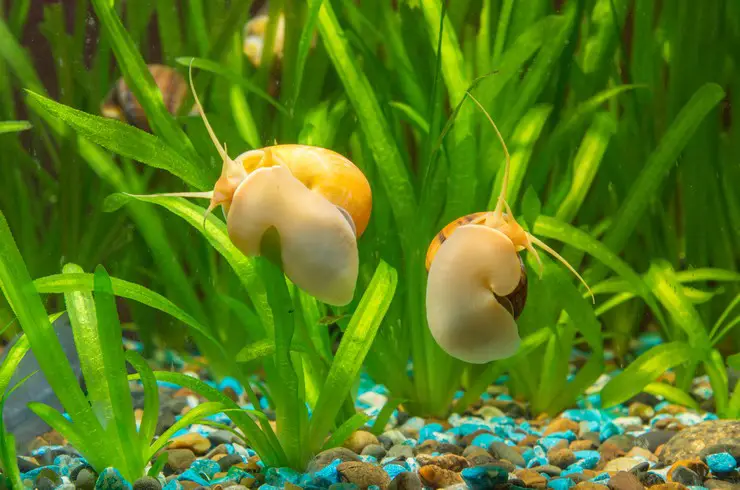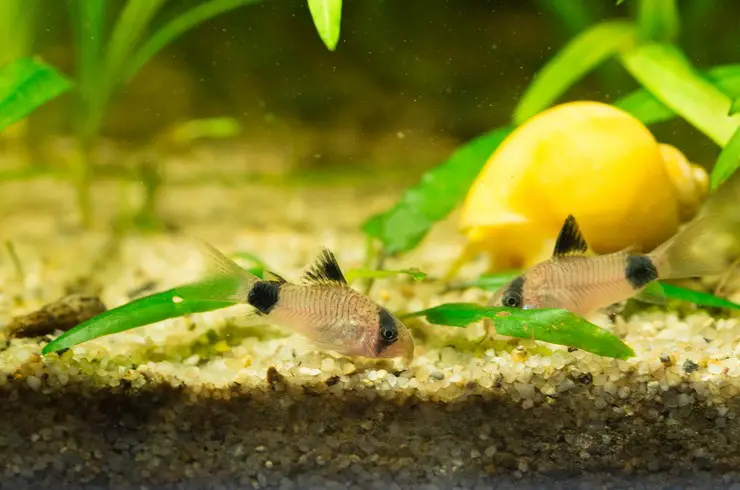Aquarium snails ampulla are not inferior in popularity to even some types of fish. These bright and beautiful, and most importantly, peaceful gastropods will adorn any aquarium. You can keep snails either singly or in groups.
Aquarium for ampullaries
Ampularia belongs to large snails, the size of the shell of individual individuals can reach 10 cm. It is recommended that at least 10 liters of a waterfall on one individual. The minimum aquarium volume for keeping ampullary is 40 liters.
It is very important that the ampullary aquarium has a lid and does not have large technological holes. Snails have an amazing ability to find any crevices. This is especially true for females who are looking for a place for a new clutch of eggs. If the snail falls out of the aquarium, it will be able to stay out of the water for no more than a day, after which it will die. If it falls, the shell of the mollusks may also be damaged.
Ampularia snails are quite voracious, therefore, they leave behind a large amount of waste. Therefore, it is important to organize good filtration in the aquarium. You will also need a compressor because breathing in these mollusks occurs mainly with oxygen dissolved in water. However, ampullary must also have access to the surface of the water so that they can breathe atmospheric air using their long breathing tube.
Adequate maintenance of the aquarium includes cleaning the walls, regularly siphoning the soil with a water change, and rinsing the filter sponge.
Water parameters
Ampularia is thermophilic snails, which are best kept at a temperature of 23-25 ° C. If the water temperature is low, then the metabolism of the mollusks will slow down and they will be in a state of “hibernation”. In the opposite situation, if the water is too warm, ampullae will be very active, which also negatively affects their condition and leads to a reduction in their life expectancy.
It is highly discouraged to keep ampullary in very soft water. Snails need calcium to build their shells, so softening and destruction of shells are often observed in soft water. Water hardness should be 8-18 dGH. But the acidity of the water does not play a special role, the optimal values will be pH = 6.5-7.8.
Shine
Different types of ampulla relate to lighting in different ways. Some prefer activity in the dark, while others do not bother with bright light. Snails have no special requirements for light. But it is worth noting that when kept in aquariums with bright lighting, ampullary shells can become covered with green algae, which spoils their appearance, although it does not cause any harm to the mollusks.
Priming
For keeping ampullary, soft sand or small rounded soil will be most suitable. It is not recommended to use substrates with sharp edges, against which the snails can damage their soft tissues.
Plants
Ampularia is omnivorous snails. First of all, they pay attention to the food of animal origin, but if the mollusks lack food, they will easily start eating plants with delicate leaves. Therefore, it is best to dwell on rigid-leaved species – Anubias, giant Vallisneria, Cryptocorynes.
Feeding ampullary
Problems with feeding ampullary at home usually do not arise. They perfectly eat up any food that was not eaten by the fish and fell to the bottom. In this case, the shape does not play a special role: it can be flakes, and chips, and granules. However, it is important to remember that it is difficult for ampullary to win the competition for food with fish, so it is necessary to ensure that the food still gets to the snails.
Vegetation must be included in the diet of ampullary, therefore, periodic feeding with tablets for herbivorous fish is necessary. Tetra Pleco Spirulina Wafers or Tetra Wafer Mix are good choices. The high content of spirulina algae will fully satisfy the snails’ need for plant food. The tablets quickly sink to the bottom, which makes it possible to feed the ampullary in a targeted manner. At the same time, the food retains its shape well and does not cause cloudy water.
Compatibility
Better companions for a general aquarium than ampulla are hard to find. They are completely harmless and will not harm other aquatic life.
But not all types of fish are suitable for joint keeping with snails. Some of them constantly disturb the sluggish mollusks.
Small viviparous fish (guppies, petsilia), catfish, neons, danios, tetras will become excellent neighbors.
Active barbs (Sumatran, mutant) can bite the antennae of the ampullary, so their cohabitation is not recommended. Aggressive cichlids and labyrinths will not become the best neighbors. They may eat young snails or prevent them from climbing to the surface to breathe.
There are types of fish that actively feed on snails – tetrapods and botia. It is better not to run an ampullary in aquariums with them. Also, do not combine these beautiful mollusks with predatory Helen snails. They rarely attack adult snails, but young ampullary can quickly exterminate.
Life span
At home, the lifespan of the ampullary can be 3-5 years, provided that the temperature in the aquarium is in the range of 18-25 ° C. In very warm water, mollusks rarely live for more than a year and a half.
